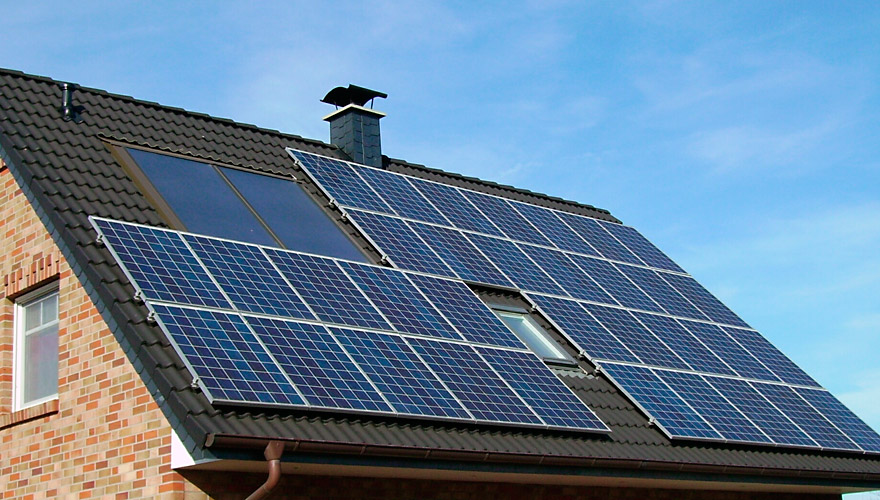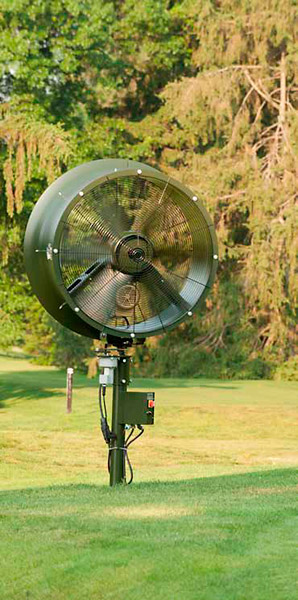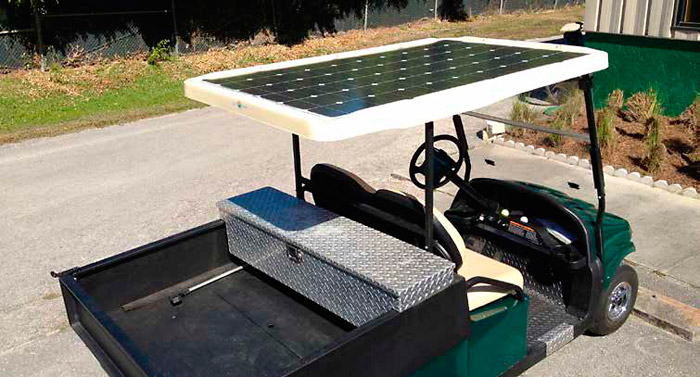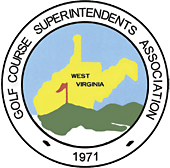Energy

According to the GCSAA Golf Course Environmental Profile, Vol. IV (GCSAA 2012), six major energy sources were identified for golf course use: electricity, gasoline, diesel, natural gas, propane and heating oil. In addition, operational uses were segmented to meet irrigation, turf maintenance, buildings, clubhouse operations, swimming pools and various amenity needs.
The overall conclusion of the study suggests that golf facility managers must take steps toward identifying options for conservation, efficiency, and cost savings.
To address current needs and future energy reduction opportunities, managers should evaluate current energy conservation performance practices based on the following categories:
- General energy conservation position statements on policy and planning
- Buildings and amenities statements –buildings, infrastructure and facility amenities such as the clubhouse, swimming pool, restaurant, parking lot, kitchen, offices, maintenance building(s), tennis courts, etc.
- Golf course statements – the golf course and surrounding landscapes, pump station, irrigation system and related agronomic operations (playing surfaces, equipment, turfgrass maintenance etc.)
Energy Conservation
Principles
- Determine goals and establish an energy policy that is part of the facility’s overall environmental plan.
- Establish an energy management plan for the facility based on current energy use baselines to optimize efficiency.
- Communicate policy to all staff regarding use patterns and management practices to effect change.
- Relate the policy to the entire facility, including the services the facility provides to its customers and community.
- Incorporate quality management elements for continual improvement (plan, do, check, and act) to reduce environmental and economic impacts.
- Understand that the irrigation pump is the largest user of energy. A well-engineered pump station is critical to reducing energy consumption.
Best Management Practices
- Conduct an energy audit.
- Conduct a lighting audit.
- Conduct a carbon footprint analysis.
- Add insulation where needed.
- Use non-demand electrical hour rates: charge golf carts, and use pumps to acquire water, charge maintenance equipment, and other items later in the day or early in the morning.
- Limit high-consumption activities during periods when demand is high.
- Use alternative energy from natural sources, such as solar, geothermal and wind energy generation.
- Upgrade or install National Electrical Manufacturers Association’s (NEMA) premium efficiency-rated pump motors.
- Seek output reduction by watering less area, apply target golf goals.
- Install LED lighting and/or retrofit devices.
- Install motion sensors for lights where appropriate.
- Install a programmable thermostat.
- Install solar/Geo Thermal pumps for pools and spa.
Evaluation
Principles
- Continually track and measure energy use at the facility based on energy assessment units, for example, kilowatt hour.
- Benchmark practices to evaluate existing facility consumption with other local golf facilities of similar size.
Best Management Practices
- Monitor energy use: track data, evaluate billing meters.
- Install adequate meters, gauges, etc.
- Develop an equipment inventory incorporating individual equipment’s energy use, use / traffic patterns, etc. (maintenance records, operation hours, etc.).
- Establish a baseline for performance parameters to optimize irrigation pumps.
- Consider benchmarking performance against similar-sized facilities.
Efficiency
Principles
- Evaluate energy efficiency performance.
- Evaluate electric equipment/operations and ensure proper selection, operation, charging, and maintenance.
Best Management Practices
- Evaluate all energy providers (electricity, natural gas and liquid petroleum fuels) for costs, efficiency/assistance programs, and incentives.
- Identify and categorize operations for energy efficiency opportunity and conservation analysis.
- Perform assessments of all the facility’s infrastructure and operations.
- Perform appropriate audits throughout the facility depending on operation, infrastructure, and planning stage.
- Identify efficiency and conservation elements of infrastructure/hard items and behavioral/process-oriented items.
- Consider alternative equipment, products, and practices.

Design and Renovation
Principles
- Incorporate an analysis of the assessments, audits, and data.
- Incorporate first cost consideration (initial investment and long-term gain).
- Redesign – evaluate future projects with a priority for energy conservation.
- According to system and compliance standards, communicate with utility provider, insurance company, and any state or local regulatory officials.
Best Management Practices
- Identify buildings, amenities, and operations including existing, new construction, or renovation activities where energy efficiency enhancements are needed.
- Identify the golf course, course infrastructure, and related agronomic operations including existing and future developments or renovations that would benefit from energy efficiency improvements.
Implementation Plan
Principles
- Set goals for buildings/amenities and the golf course operation; develop an implementation plan.
- Set energy-use goals according to efficiency/conservation of the building, infrastructure and equipment efficiency.
Best Management Practices
- Evaluate effectiveness of upgrades according to efficiency/conservation goals for energy use.
- Continue to identify future energy needs and maintain good record keeping.
- Prioritize energy consumption as part of purchase/decision-making process for HVAC, food service, laundry, swimming pools, etc.
- Consider other devices as part of the plan; do research on building, pumps, and power generation.
Infrastructure
Principles
- Ensure efficient building/facility/amenities and related infrastructure.
- Consider the materials: used insulation and color selection.
- Ensure efficient lighting in both interior and exterior areas.
Best Management Practices
- Maximize use of space.
- Inspect and repair leaks/maintenance.
- Monitor temperature/environmental settings (heat loss, etc.).
- Evaluate building automation systems, monitoring systems, etc.
- Incorporate technology and up-to-date equipment (lights, controls, switches, etc.).
- Implement schedules/controlled use.
- Evaluate off-grid pole lighting and similar technology.
Alternative products, operations, and practices
Principles
- Educate and motivate employees, guests, etc.
- Educate, train, and motivate employees on energy efficiency practices pertaining to golf course operations.
- Identify incentives and programs from energy providers.
- Identify state/local programs and certification.
- Consider U.S. Green Building Council’s LEED program.
- Consider EPA’s EnergyStar, Portfolio Manager, etc.
- Consider energy management software, services, etc.
- Consider national and local programs and programs like the EPA’s WaterSense program as it relates to buildings (see Water Conservation BMP).
Best Management Practices
- Evaluate alternative transportation.
- Evaluate cleaning practices (dry vs. wet).
- Consider local vs. distant purchases, product selection, etc.
- Evaluate energy acquisition and energy coming into the facility.
- Evaluate golf car equipment/operations and ensure proper selection, operation, charging, and maintenance.
- Incorporate training for employees.
- Incorporate the use of incentives.
Course Management Plan
Principles
- Set energy-use goals for efficiency/conservation including infrastructure, equipment, behavior and agronomic practices.
- Ensure proper selection (type, size, etc.), operation, and equipment maintenance.
- Ensure efficient design, selection, operation, and maintenance of irrigation pumps, irrigation controls and other irrigation components.
- Implement energy source selection, management, and efficiency/conservation practices.
Best Management Practices
- Work with energy providers and evaluate existing programs, resources, etc.
- Consider long-term costs in addition to acquisitions.
- Schedule reviews to evaluate future technology and fuel types.
- Evaluate upgrades.
- Evaluate use of alternative energy/fuels.
- Identify future energy needs.
- Prioritize energy consumption as part of selection.
- Optimize equipment use data including hours operated, use patterns, etc.
- Incorporate new technology and upgrades when feasible.
- Consider alternative equipment, products, and practices.
Irrigation
Principles
- Ensure efficient design, selection, operation, and maintenance of irrigation pumps, irrigation controls, and other irrigation components.
- Assess irrigation pump efficiency; consider alternative equipment, products, and practices; use energy efficiently to maximize the output of the pump station.
Best Management Practices
- Audit irrigation system (see Water Conservation BMP).
- Schedule and operate pumps and irrigation in an efficient manner.
- Identify and implement infrastructure and behavioral changes.
- Evaluate technology and upgrades; implement when feasible.





